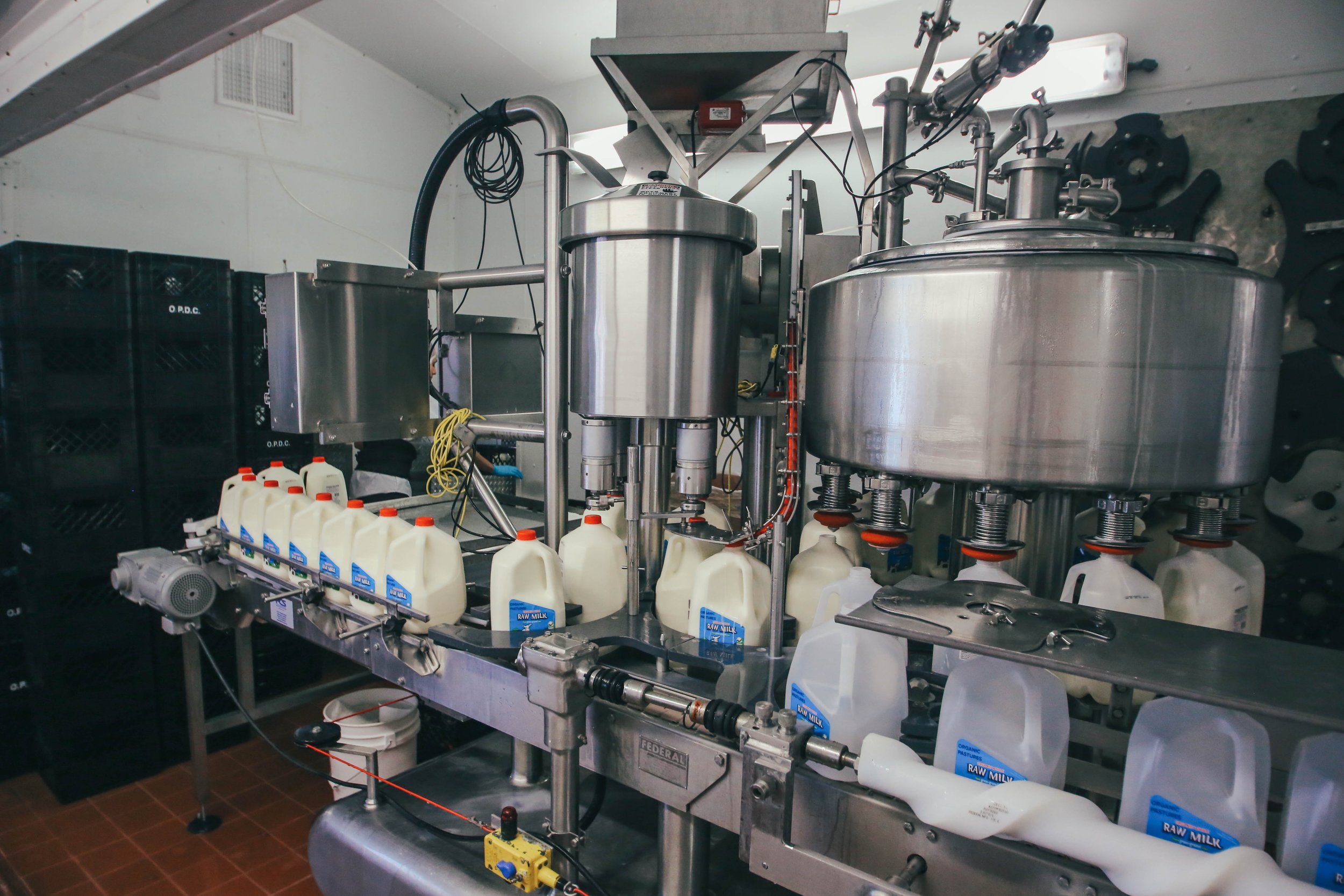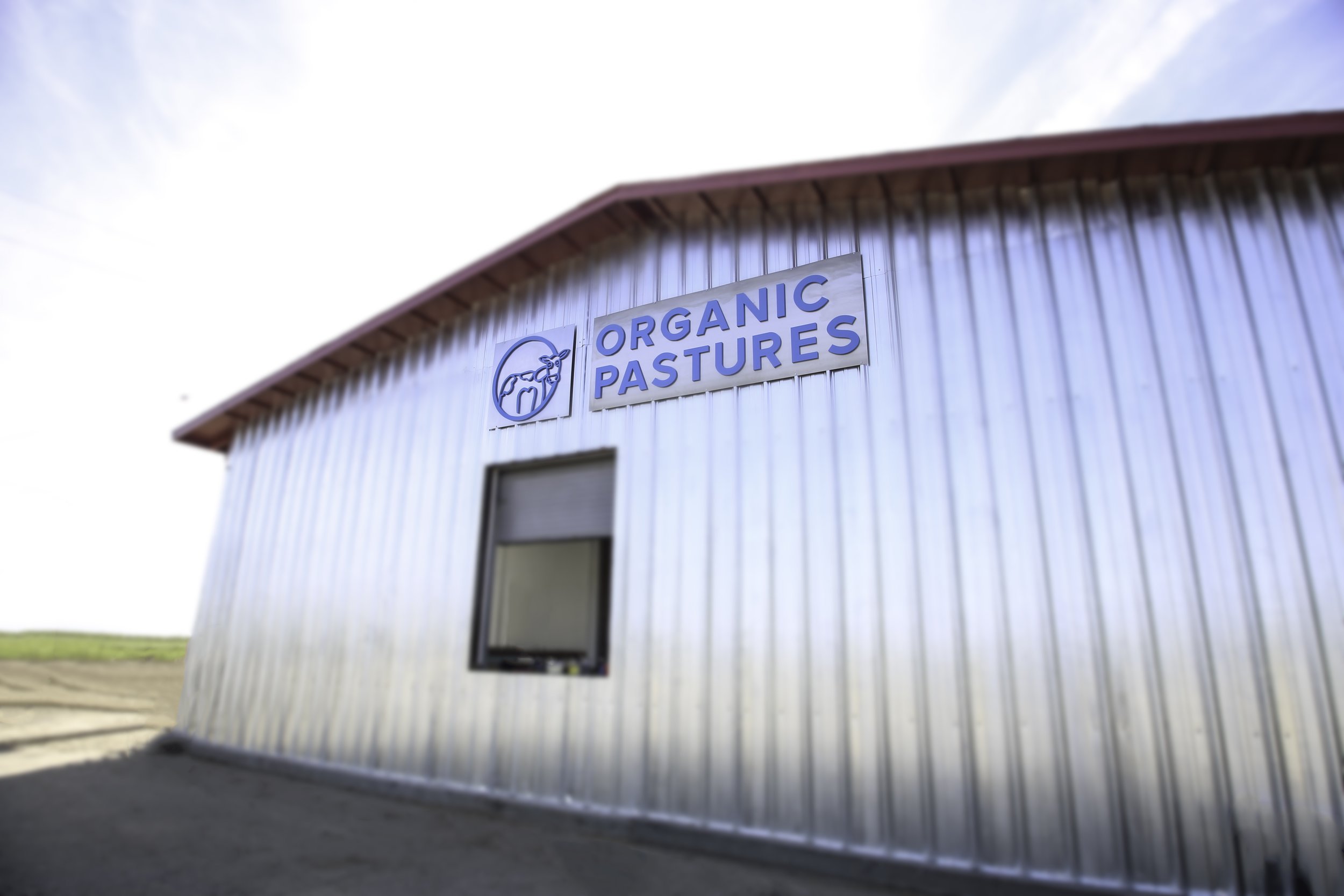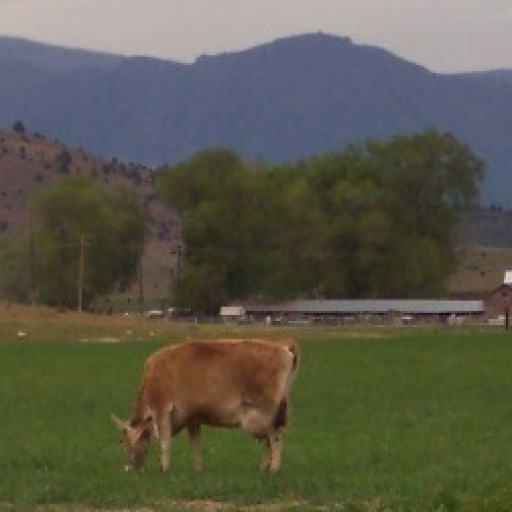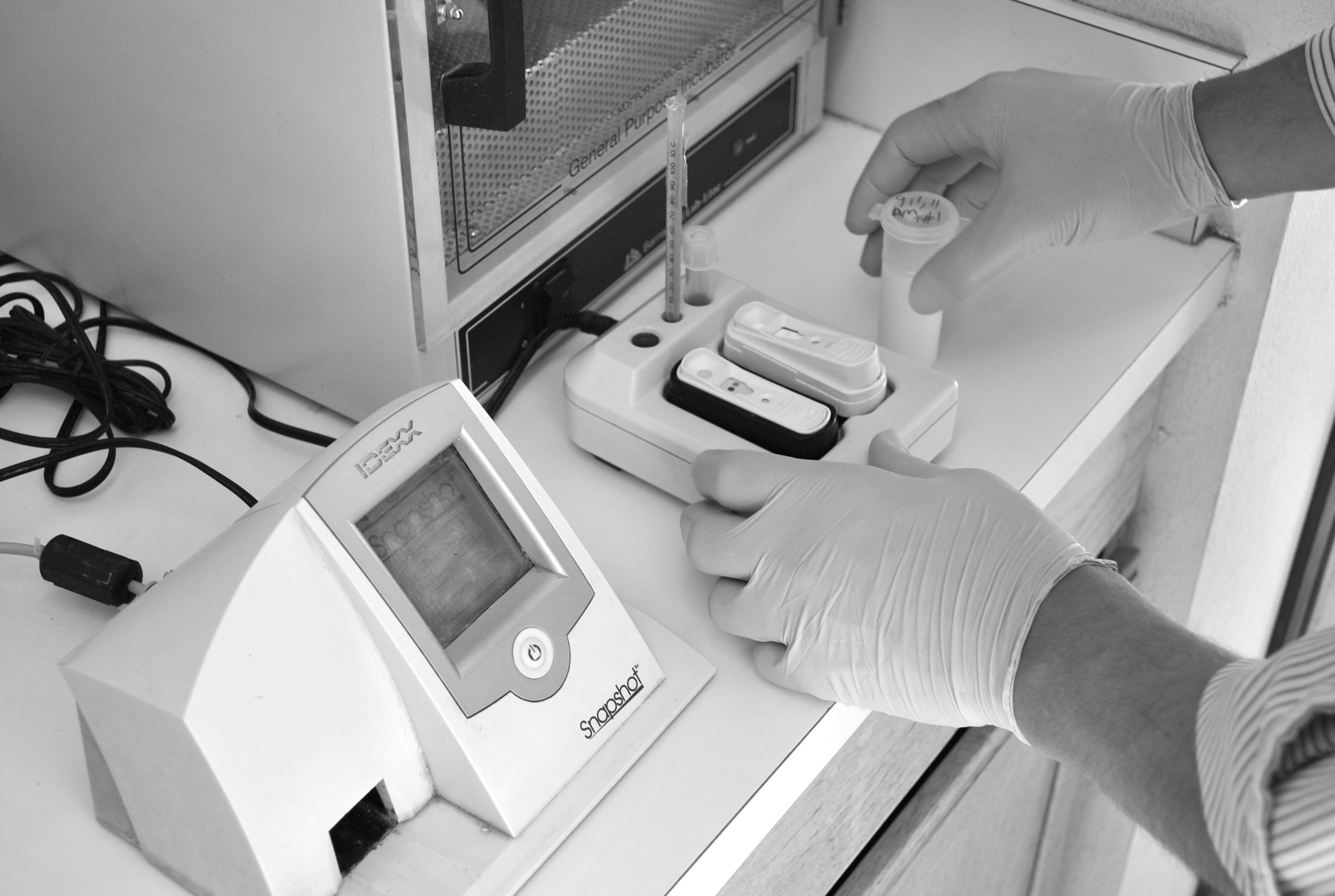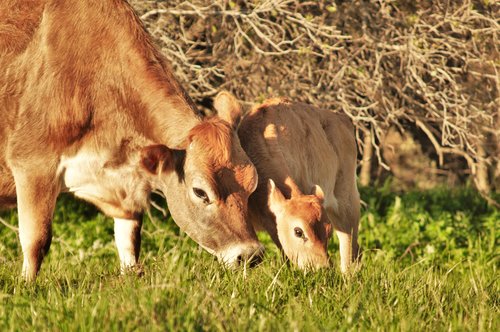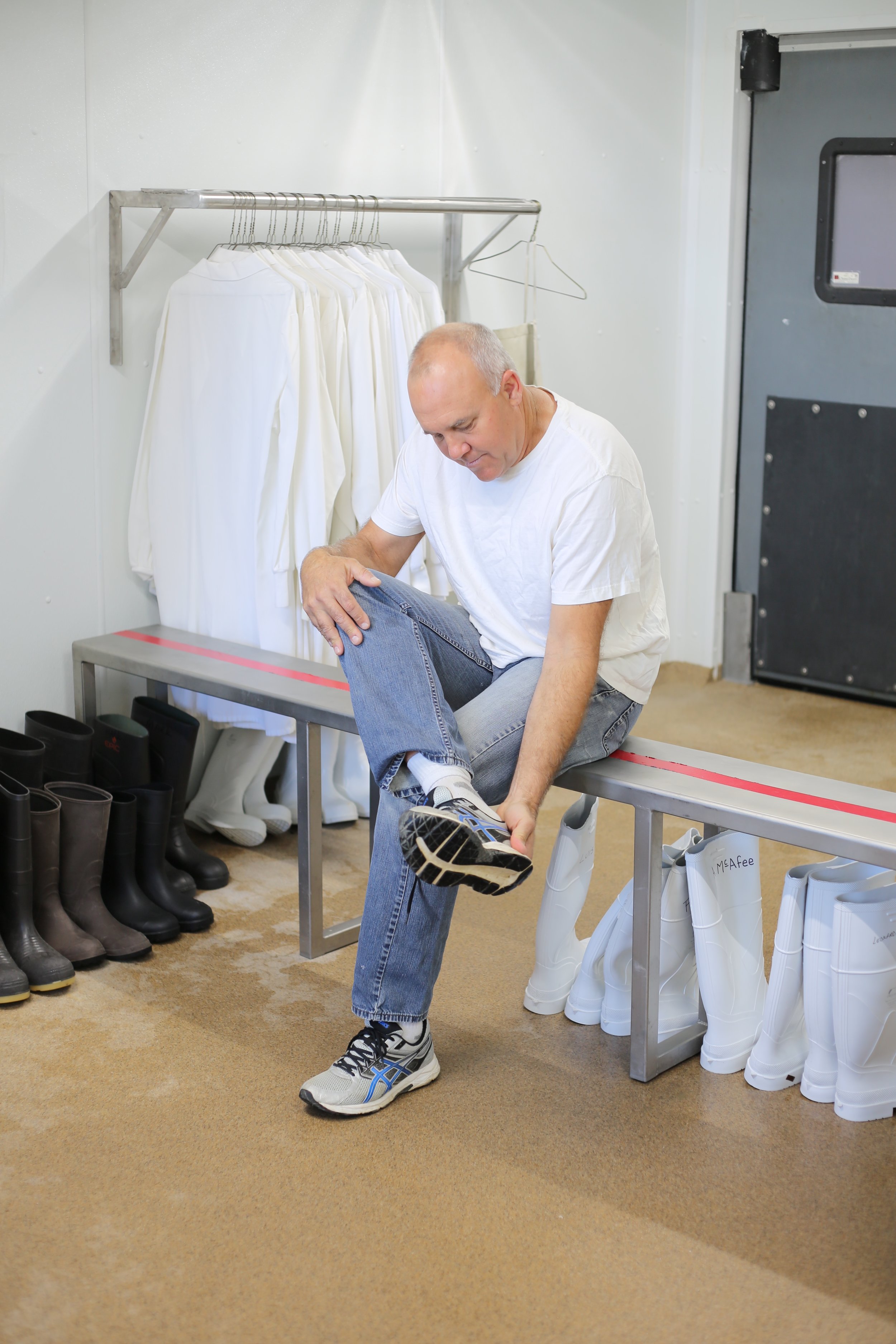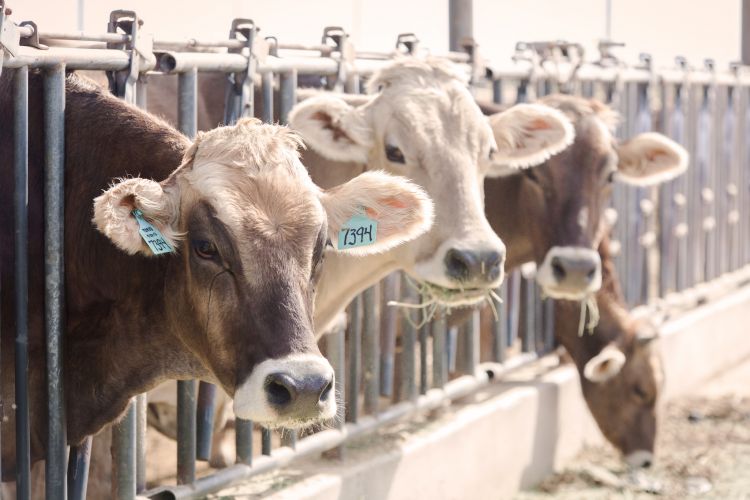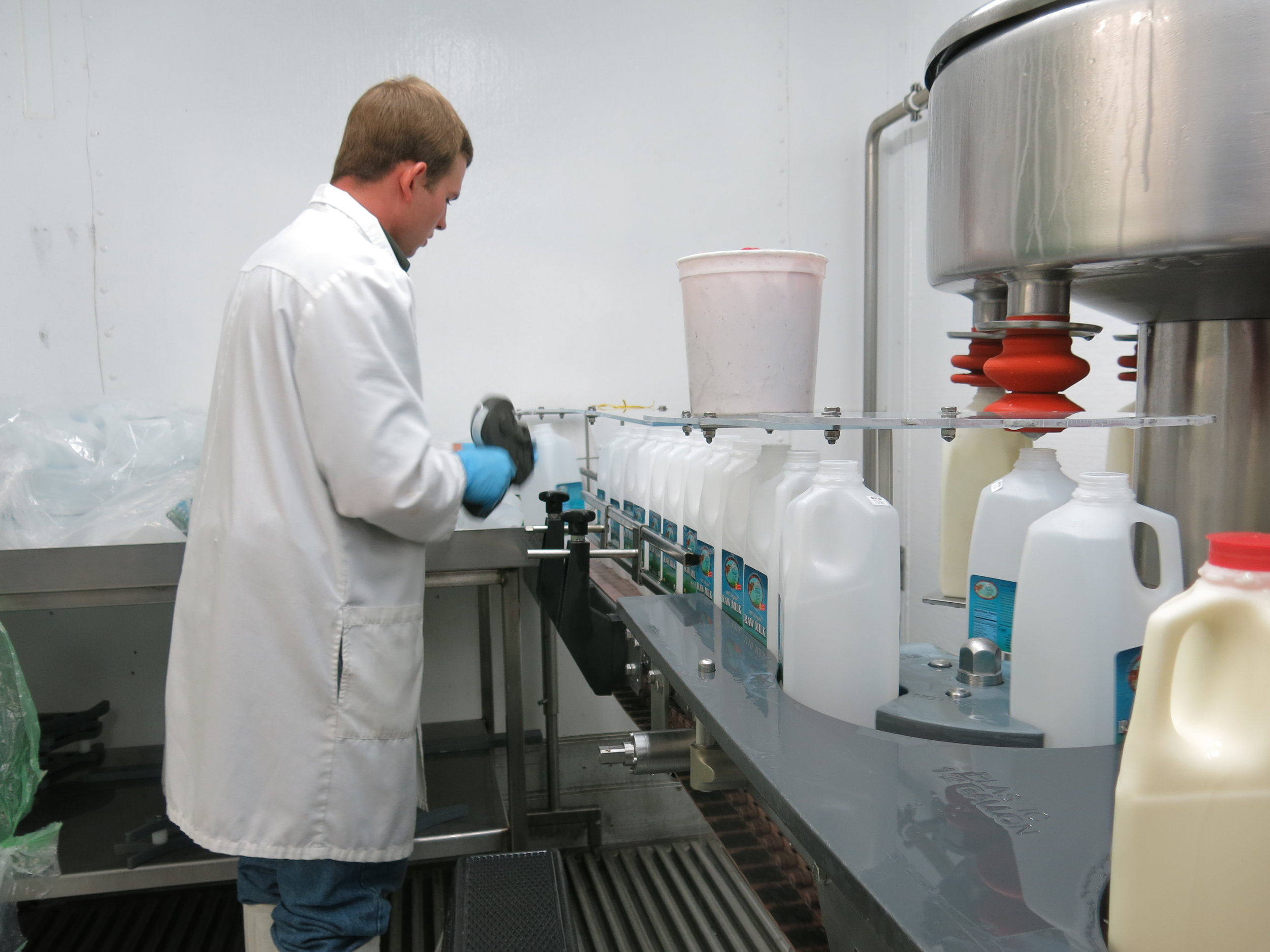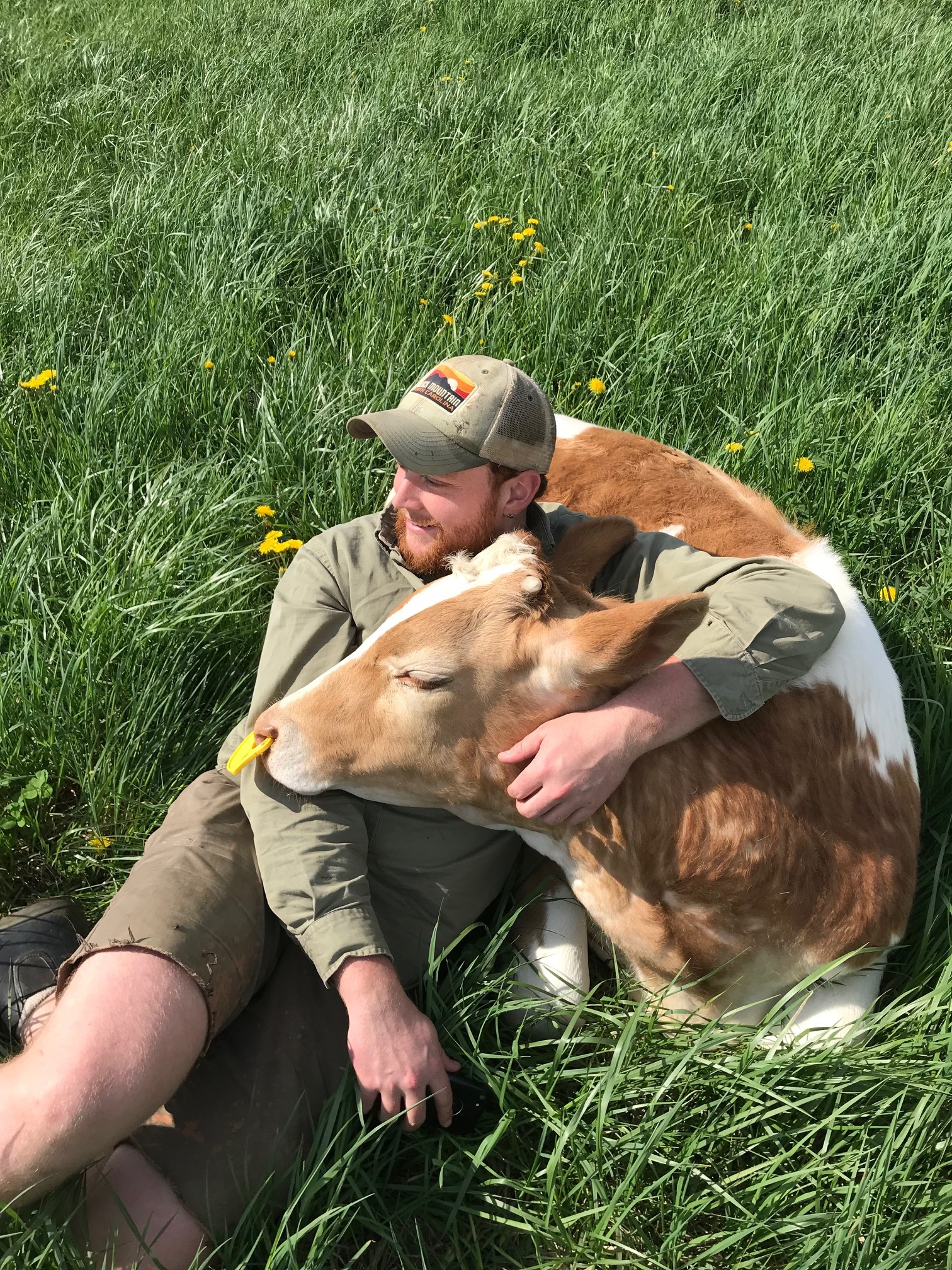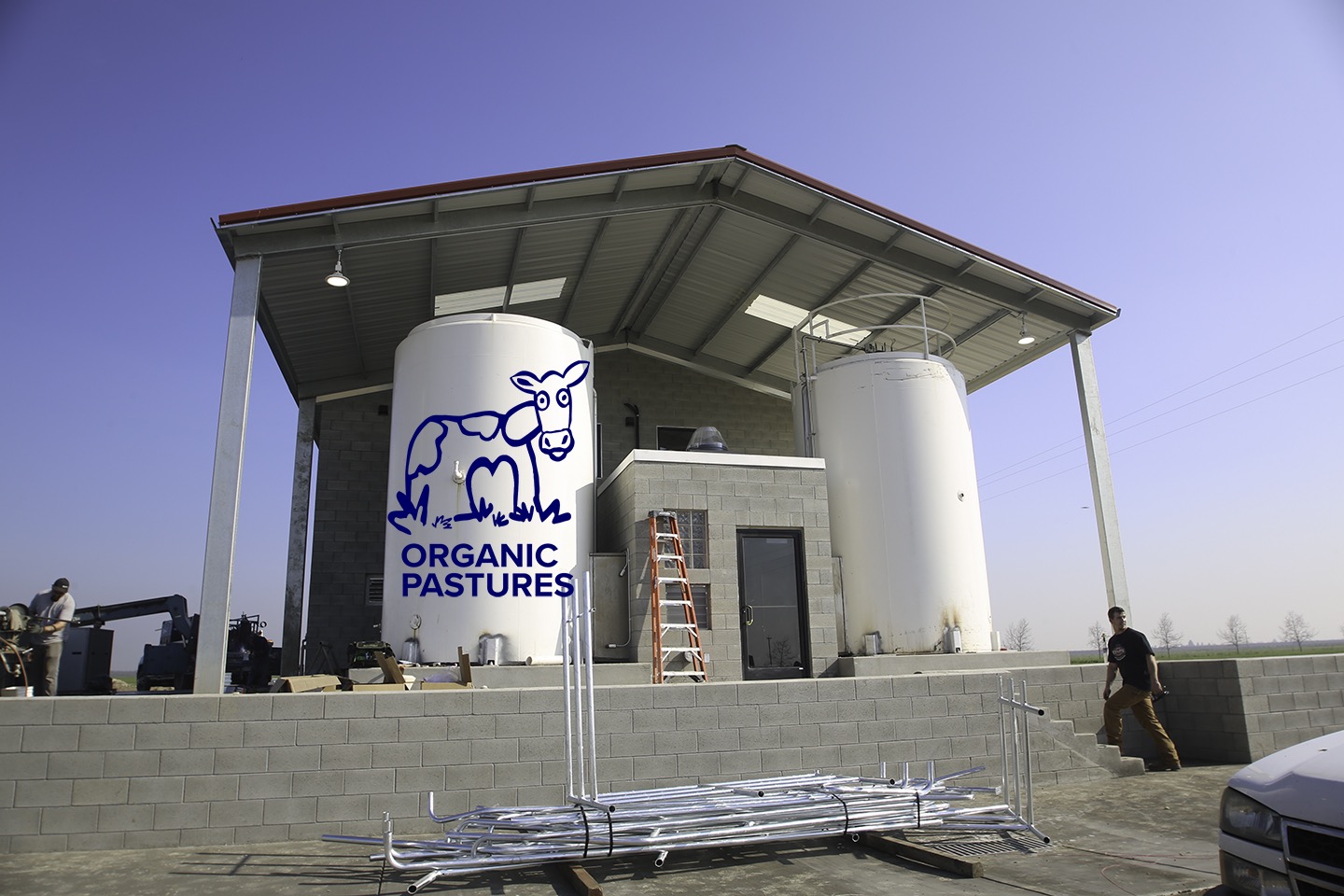September 2019 Edition
Dear Friend,
Welcome to the Fall 2019 edition of the RAWMI Ripple. Herein you'll find information about the latest in the world of raw milk, including recent training, lessons learned, a newly LISTED RAWMI dairy, and the battle for national legalization of raw butter.
RAWMI Farmer Training in Washington State and British Columbia, Canada
Earlier this month, RAWMI trained farmers in Washington State and Vancouver Island (in British Columbia, Canada). RAWMI presented two 4-hour, farmer-centered training classes, covering raw milk risk management from Grass-to-Glass. Nearly 50 farmers attended the training classes. The farmers in attendance represented production of cow milk, goat milk, and sheep milk! Both of the training presentations were recorded on video, to allow RAWMI to soon have a training video available for all raw milk farmers and prospective farmers.
RAWMI specifically chose to do training in Washington State in order to reduce the raw milk illness outbreak rate. The training attendees were from Washington State, Oregon, and British Columbia, Canada. While in Washington, RAWMI also visited Dungeness Valley Creamery, one of the largest raw milk dairies in Washington.
On Vancouver Island in British Columbia, RAWMI's training class was attended by farmers from Vancouver Island as well as mainland British Columbia. This class was presented in association with the British Columbia Herdshare Association, which is a non-profit organization working towards the legalization of raw milk in British Columbia. While on Vancouver Island, RAWMI visited four dairies.
Just a few of the 32 participants at the British Columbia, Canada training
S & D Smith Dairy - RAWMI LISTED Dairy #19
Congratulations to S&D Smith Dairy in Yorkshire, Ohio for becoming the 19th RAWMI LISTED dairy! S&D Smith Dairy is a herdshare, operating on nearly 200 acres of certified organic land. Their herd consists of 12 to 16 Jerseys. Welcome to the RAWMI family!
Pre-LISTING Audit of British Columbia Dairy
While in British Columbia Canada, RAWMI performed an on-site audit of a raw milk dairy that has applied for RAWMI LISTING. We studied the dairy's entire milk production system, from grass to glass, and witnessed the morning milking routine. The dairy farmer also allowed RAWMI board member Sarah Smith to get hands-on in going through the udder prep and milking routine, so Sarah got to milk a cow for the first time!
The Canadian dairy farmer was doing a great job of producing clean, low-risk raw milk. RAWMI was able to provide some constructive feedback for small improvements, and looks forward to LISTING yet another raw milk dairy in Canada.
Board Changes at RAWMI
Due to other time commitments and priorities, Sylvia Onusic and Peg Coleman have resigned from the RAWMI Board of Directors and moved onto the Advisory Board. The RAWMI Board thanks Sylvia and Peg for their service on the RAWMI Board of Directors. The current RAWMI Board of Directors includes Mark McAfee (Chairman), Sarah Smith (Secretary), and Joseph Heckman, PhD.
Lessons from Churchtown Dairy Listeria Incident
In July 2019, RAWMI LISTED Churchtown Dairy in New York had a positive detection for Listeria monocytogenes. This positive detection came during a routine product sample test performed by New York State dairy inspectors. Although no illnesses had been reported, Churchtown dairy immediately issued a voluntary recall of all milk and embarked on comprehensive testing of their cows and facilities in order to determine the source of the Listeria mono.
With the assistance of RAWMI, Churchtown discovered that Listeria mono was growing inside a crack in an inflation liner on one of the milk claws. Churchtown was able to address the problem and was re-approved for raw milk production within a few weeks. Churchtown is commended for their quick action in addressing this matter in a transparent way.
In raw milk production, it is important to ensure that rubber inflation liners are changed frequently, as per the manufacturer's suggested cycle life. Any cracks in inflation liners can provide a place for biofilm growth between the liners and the stainless steel shell; that area does not get cleaned with typical Clean-In-Place protocols. Biofilms are symbiotic colonies of bacteria that can adhere to the inside of the milk lines, valves, crevices, etc. Biofilms provide a safe haven for pathogen growth, and thus an important aspect of safe raw milk production is the prevention of biofilm growth. If you ever see milk or fluids running in the vacuum line, you have a problem and it should be immediately investigated. You probably have a crack in an inflation.
Raw Milk Posters and Brochures
In response to a request from RAWMI LISTED farmers, RAWMI has developed a series of raw milk posters and a brochure that details the benefits of being RAWMI LISTED. The posters and brochure can be used at the point-of-sale or online to increase awareness of the benefits of raw milk and RAWMI LISTING. These posters are already making a big splash for raw milk via RAWMI's Facebook page! Email sarah@rawmilkinstitute.org if you want to make use of the posters and/or brochures.
Unexpected FDA Testing of RAWMI LISTED Dairy
In late April 2019, the FDA sent a team of inspectors to Organic Pastures Dairy Company (OPDC), which is a RAWMI LISTED Dairy in California. The stated reason for the inspection was twofold:
Assure compliance with a 10-year-old court order which mandated that OPDC not ship raw dairy products over state lines, and
Assure that OPDC (as a processer and food handler) was in compliance with the new FDA Food Safety Modernization Act (FSMA) regulations.
The inspectors spent four days examining paperwork and swabbing surfaces in the on-farm creamery plant. They tested everything and everywhere: they swabbed under door mats, inside drains, behind doors, behind sinks, and all other surfaces. In total they took about 200 samples, and each was labeled for the location that it was taken. It was a massive search effort to find pathogens.
The team at OPDC had previously attended FDA FSMA training in 2018 and had already written their food safety plan for the FDA. They also had their RAWMI Risk Assessment and Management Plan and years of testing data to back it all up.
A couple weeks after the FDA inspection, OPDC received a report indicating that the FDA had found NO pathogens in any of their tests.
OPDC credits the environmental conditions inside of their dairy and creamery for the absence of pathogens. Aggressive beneficial cultures from the production of raw kefir, raw cheeses, and cultured butter populate the environment in the creamery, thereby displacing and outcompeting pathogenic bacteria. Thus, the creamery has its own facility biome and strong immune system!
In pasteurized dairy plants and creameries, pathogens are a real problem because sterility is the goal. Instead of using a system where beneficial bacteria outcompete pathogens, death to all bacteria is the goal. These attempts at a sterile environment encourage resistant forms of bacteria and pathogens to develop, as they adapt and overcome sanitizers and heat. However, just as is the case within the human gut, the presence of beneficial bacteria which can outcompete the pathogens is ideal. Of course, raw creameries should be clean, but they will also benefit from having beneficial bacteria which help prevent pathogenic bacteria from taking hold in the overall environment.
Importance of Methodology and Statistics in Challenging Canada’s Prohibition of Access to Raw Milk
The case challenging Canada’s prohibition of access to raw milk continued September 16-18 in Toronto. This case was brought forward by petitioners for Glencolton Farm. Two experts, a regulatory authority for the Canadian government and an emeritus professor in dairy science, were cross examined by the attorney for Glencolton, with assistance from microbial risk assessor and former RAWMI board member Peg Coleman.
As noted in the May 2019 Ripple, RAWMI supported work by independent statistician Dr. Nick Azzolina which confirmed not only that there is no significant increase in outbreak rates with increasing access to raw milk, but also no increase in rates of illness or hospitalizations. With additional support from the Weston A. Price Foundation (WAPF) through the SRA Whole Truth, Whole Milk Campaign, Dr. Azzolina and Peg prepared a technical manuscript recently submitted to the prestigious journal Risk Analysis that includes more context and additional results for rates of illness and hospitalizations over time. For the Toronto case, this high level statistical analysis in both a report and a manuscript submitted for peer-review is directly applicable. Because of this work, expert witnesses for the Canadian government and others cannot make speculations about increasing raw milk outbreaks and illnesses without admitting that their views are based on opinion or flawed studies that are not based on a valid statistical analysis of data.
Other important questions arose in Toronto at last week’s cross examinations by the attorney for the Glencolton Farm petitioners, many regarding methodology for risk/benefit analysis. In cross examination, the experts attempted to dismiss all studies demonstrating benefits on the grounds that the mechanisms of benefit were not fully known. However, their dubious reasoning was challenged on the basis that risk predictions are also highly uncertain, and the mechanisms causing one person to develop illness and another to remain healthy are only partially understood. The reality is that uncertainties exist for predicting benefits as well as predicting risks, and formal methods are available for unbiased assessments.
It has been documented by Loss et al. (2015) that there is a significantly lower risk for children consuming raw versus pasteurized milk for monitored health outcomes including respiratory illnesses, fever and diarrhea. That same year, McCarthy and colleagues (2015) determined that pasteurized milk has unintended adverse consequences for immune system development linked to higher risks for allergy and inflammation than determined for raw milk. The advances of knowledge for raw milk benefits and risks, and their mechanisms, are the subject of another manuscript in preparation through the Whole Truth, Whole Milk Campaign. Thanks to WAPF, RAWMI, and other donors for supporting such rigorous independent analysis using well-described methodologies essential for peer-review, thereby strengthening the scientific basis for future decisions about raw milk in Canada, the US, and around the world.
The Battle for Butter
After years of waiting for the FDA to respond to a formally submitted “Citizen Petition”, there is now an exciting food fight finish on the horizon! Years ago, the FDA denied a Citizen Petition to legalize access to raw milk on a national level and to allow raw milk to be sold across state lines. The FDA's letter of denial was lacking in scientific basis; it denied peer-reviewed literature that was published through the National Institutes of Health, and even denied that the European PARSIFAL study related to raw milk. The PARSIFAL study of over 14,000 children found that there was a statistically-significant lower rate of allergies, eczema, and asthma in kids who were raised in a farm environment and consumed raw milk. Yet the FDA insisted that “farm fresh milk" was not raw milk!
Additional EU studies followed after PARSIFAL and confirmed the findings. Raw milk is a powerful immune system building food. The FDA refused to accept any of this data even though it was PUBMED published and peer reviewed. The FDA position clearly indicated their bias against raw milk, so a different approach was needed to increase consumer access to raw dairy products.
Together with the Farm to Consumer Legal Defense Fund, a third FDA Citizen Petition was submitted in 2015. This petition was about legalization of the shipment and sale of raw butter across state lines. Instead of taking down the whole raw dairy wall, we decided to focus on the weakest brick in the wall: RAW BUTTER! The rest of the bricks would come tumbling down later, after RAWMI had done its work to make raw milk very low risk and safe.
Raw butter is an exceptionally nutritious food. For instance, the enzyme alkaline phosphatase (ALP) is found in the butter fat membrane that covers fat globules. ALP decreases inflammation in the body; it is associated with good health and less chronic illness, such as cardiovascular disease and Type-2 diabetes. Raw milk has 4% butter fat, but raw butter contains 86% fat and thus it is very high in alkaline phosphatase. ALP enzyme is destroyed by pasteurization. Americans are being denied access to raw butter which is a very powerful anti-inflammatory food, meanwhile we are suffering from more chronic illness!
Butter's low moisture, low pH levels, high fat content and salt levels inhibit pathogen growth and the FDA science concurs with this argument. Raw butter has had a near perfect track record of zero illnesses and no deaths for 60 years. The FDA is supposed to respond to Citizen Petitions within 180 days, but the Raw Butter Petition has had no response from the FDA for more than 3 years.
Now, RAWMI and the Farm-to-Consumer Legal Defense Fund are taking raw butter into the federal court system to force the FDA to respond and address each of the petition demands. The FDA should have no rational or reasonable basis for argument against raw butter and its legal access by all Americans. The courts should side with the facts and order the FDA to start regulating raw butter the way they regulate 60-day aged raw cheese, allowing it to pass freely all over America.
Additionally, RAWMI has been actively involved with working towards a change of Pennsylvania state law to allow raw butter to be produced and sold in Pennsylvania. According to those involved in the project, the new law appears to have broad support and will likely pass into law next year.
Safe raw milk makes ultra-safe raw butter with powerful health benefits. We are looking forward to this food fight and the positive Ripple effect is can have on all the other raw dairy products. We're taking it one step at a time as we inch closer and closer to our vision of universal access to safe, low risk raw dairy products for all people.
RAWMI Training
RAWMI will be providing a 3.5 hour presentation on raw milk risk management at the Pennsylvania Association for Sustainable Agriculture (PASA) conference. This conference is February 5-8, 2020 in Lancaster Pennsylvania. Mark McAfee, Sarah Smith, Dr. Joseph Heckman, and Edwin Shank will be presenting at this event.
RAWMI will be providing a 2 hour presentation on raw milk risk management at the Utah Farm and Food Conference on February 9, 2020. This conference is in Cedar City, Utah. Mark McAfee will be presenting at this event.
RAWMI has applied to present at several other upcoming conferences. RAWMI is also working on a web-based version of the raw milk risk management training, for farmers and others who aren't able to attend training in-person.




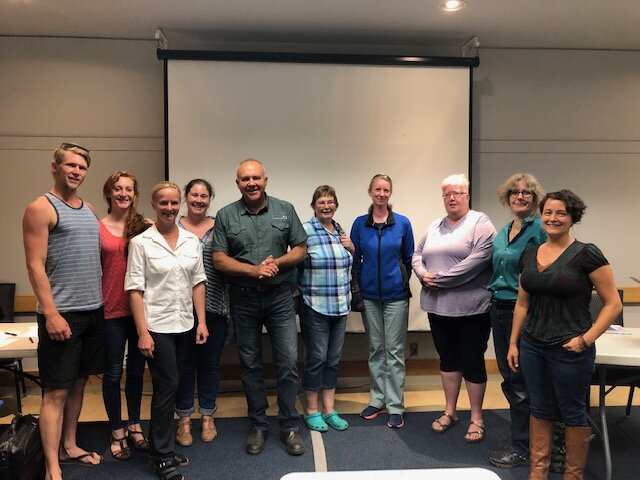











![Lancaster Farmer LetterIMG_4244[1].JPG](https://images.squarespace-cdn.com/content/v1/5c930aceaf4683e69e2cd577/1559067924691-JEC9Z58717Z58DV43W0E/Lancaster+Farmer+LetterIMG_4244%5B1%5D.JPG)














